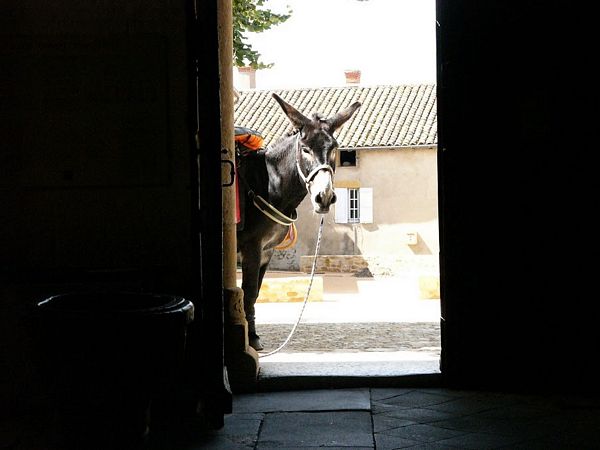
Before beginning your trip, have a look on the following news. It can be nice to know a little bit more about your companion.
|
Classification Branch : Vertebrates |
The donkey (or ass) family male : donkey or ass
|
|
| The donkey's weight varies from 80 kg for a miniature donkey to 480 kg for a Poitou male. | Hauteur au garrot : de 0,80 m. à 1,60 m. | |
| Its ears are extremely mobile and measure half the length of the head. | It lives an average of 30 to 35 years. Exceptionally, it can live beyond 50. | |
| The period of gestation of the she-donkey is between 12 and 13 months. | The tail is long and ends in a tuft of coarse hair. |
Not much though ... We know so little about the arrival and territorial expansion of the ass.
At present it is thought that it was in the Pleistocene period (about a million years go) that the first equidae appeared. As evolution proceeded, three distinct species developed, the horse, the ass and the zebra, all deriving from the Equus of the Quaternary period. We find numerous traces of the existence of the ancestors of asinus in prehistoric times, but of course it was much later that asses were put to use.
Authors disagree as to whether the domestication of the ass took place earlier or later than that of the horse. Some authors, believing it was earlier, even speak of the use of the ass in the Late Stone Age. Up to now, no reliable scientific discovery has enabled these theories to be proved or disproved; it would be more exact to say that in early times the two species were put to use in different geographical areas. What is more certain is that the Nubian ass was domesticated in Lower Egypt more than 4000 years BC, and the
North African ass rather later. The European races come from these two sub-species. It is thought that they were introduced by the Etruscans, who emigrated from Asia Minor to Italy. The Greeks and Romans acclimatized them in Southern European countries. In the XVIth century, the Spanish conquistadores introduced them in South America.
